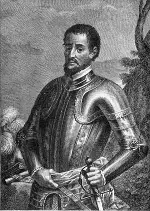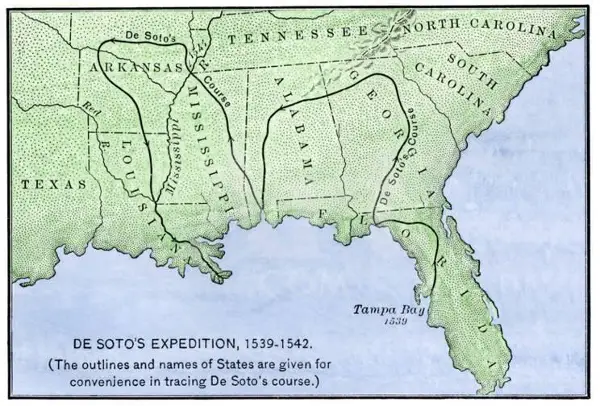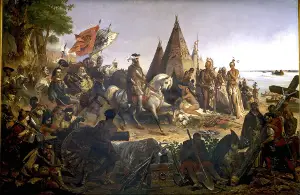Hernando de Soto was a famous Spanish conquistador, known for his explorations of what is now the southeastern United States. De Soto was born in Spain's Extremadura region at the turn of the 16th Century. When he was 14, he set sail for the New World, as a member of the party of Pedro Árias dávila. Later joining this party was another famous Spanish explorer, Francisco Coronado. De Soto quickly proved his mettle as a fighter and horseman and was given command of raiding parties in what is now Costa Rica and Honduras. He conquered what is now Nicaragua in 1524. 
De Soto signed on as a soldier, accompanying other Spanish raiders in attacks on Nicaragua, Panama, and Peru. In search of an easy way to China, he led an expedition into the Yucatan Peninsula that ultimately failed to achieve its goal. He then signed on under the command of Francisco Pizarro, whose army would eventually conquer the Inca. De Soto it was who was the leader of the first force to make contact with Atahualpa, the great Inca leader. (De Soto served as lieutenant governor of Cuzco for a time after the conquest.) In 1536, Spain's King Charles I gave de Soto the royal imprimatur for an expedition to North America, to explore La Florida, what is now the southeastern U.S. The base for this expedition was Cuba, of which de Soto was made governor. 
An expedition of about 600 men, they set out in May 1539. They traveled through what is now Alabama, Arkansas, Florida, Georgia, Louisiana, Mississippi, North Carolina, Oklahoma, South Carolina, Tennessee, and Texas. They crossed the Appalachian Mountains and He contracted a fever and died on the banks of the Mississippi on May 21, 1542. He was 46. He left behind his wife, Isabel de Bobilla; they had no children. De Soto is known for his wide-ranging expedition around what is now the southeastern U.S. |
|
Social Studies for Kids
copyright 2002–2024
David White



 explored the Tennessee River Valley. The first Europeans to see the Mississippi River, they crossed it but didn't go up or down it. They didn't find the gold that they were seeking.
explored the Tennessee River Valley. The first Europeans to see the Mississippi River, they crossed it but didn't go up or down it. They didn't find the gold that they were seeking.
